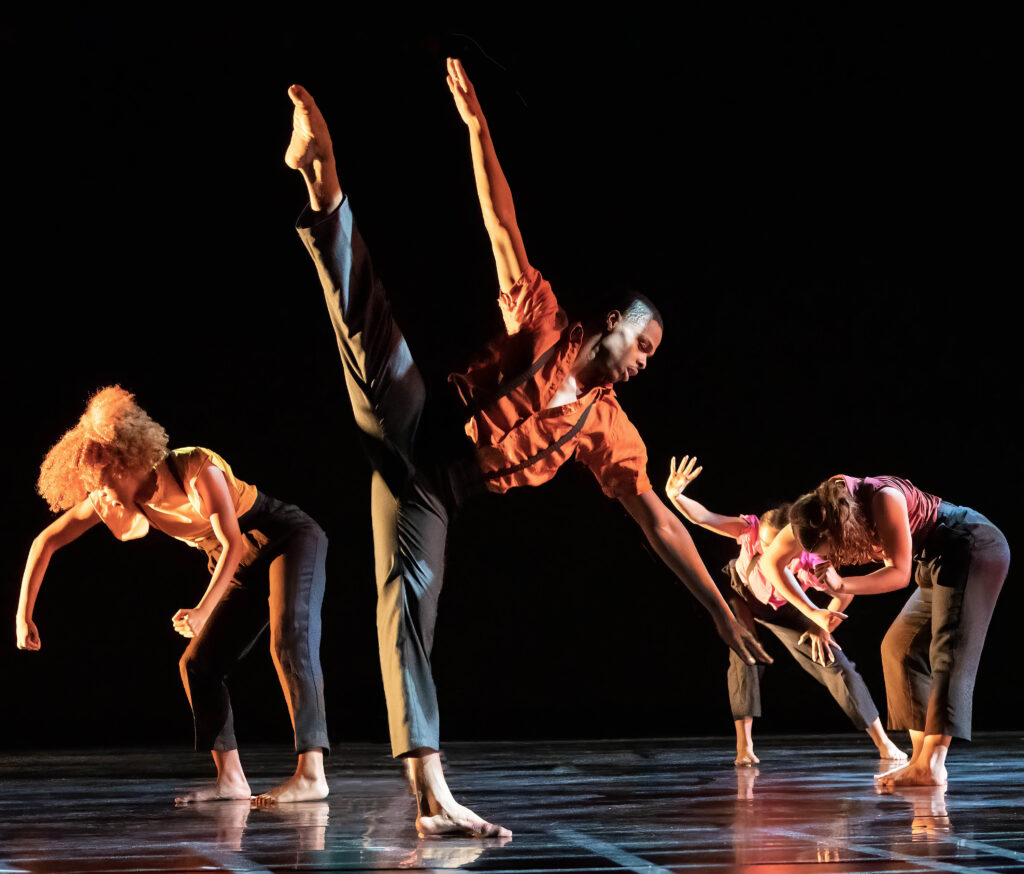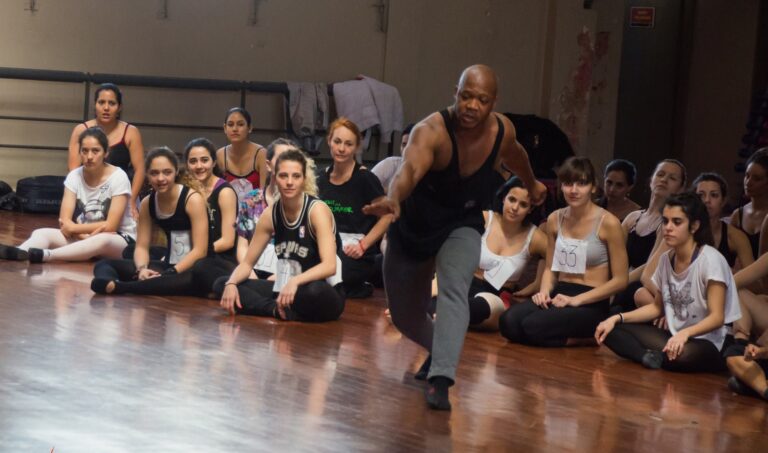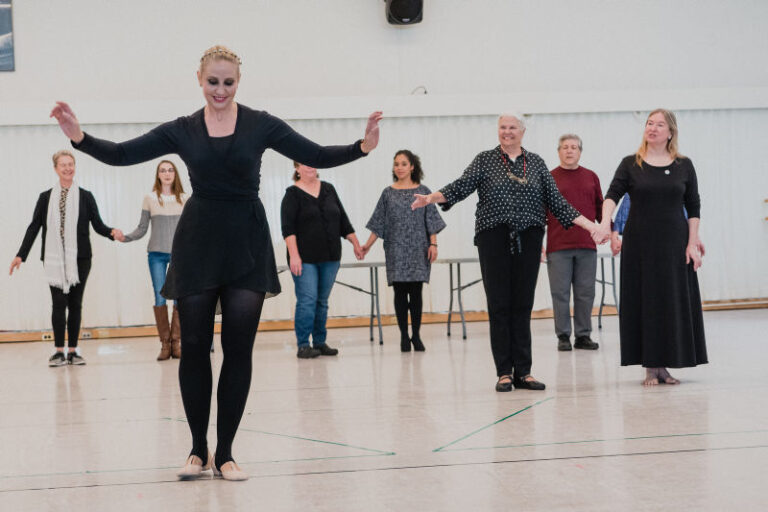
Repertory experiences are a critical part of dance education—especially for college dance majors. Generally, universities with BFA dance programs have main-stage dance concert series toward the end of the fall and spring semesters. This rehearsal and performance process is designed to prepare students for the professional field.
To shed some light on the curation process, Dance Teacher spoke with four educators in BFA dance programs: associate professor Bruce McCormick, at the University of Southern California; assistant professor Leslie Kraus and associate professor Roxanne Lyst, at the University of Oklahoma; and associate professor Christian von Howard, at Montclair State University.
Choosing Choreographers
All four educators explained that their main-stage concerts in the fall and spring semesters usually include a mix of faculty choreographers and guest choreographers. When choosing guest artists, all four stated that they look for people whose work and working processes differ from those of the faculty that students already work with in their dance courses. This way, students can expand their horizons, widen their aesthetic worldviews, and enhance and honor their artistic and technical skills.
“We look for choreographers who can feature and challenge the technical level of our students,” says McCormick. Kraus also notes that, “inspiring growth but not presenting something unattainable is a fine line. I feel lucky to have really strong students with a great work ethic, and I’m constantly watching them grow, adapt, and perform diverse repertory.”

Additionally, these educators also look to provide exposure to various modes of creation through the faculty and guest choreographers. Oftentimes, students coming into higher education have most likely experienced primarily learning choreography that was taught to them verbatim, and this continues to be a viable model that some professional choreographers use. However, many choreographers also work collaboratively with the dancers in their companies and with students, as well. For instance, a choreographer might give a set phrase and then ask the dancers to create variations on the phrase. Von Howard believes that it’s important to expose students to the “collaborative or non-collaborative aspects of working as a dancer.” McCormick explains that “by recognizing that artists have different ways of working, we aim to have students experience different models of what it means to create.”
McCormick, Kraus, and Lyst also emphasized that bringing in guest choreographers or stagers of other choreographers’ works increases the number of dance pros that students know, which may open doors for them. “I think it’s important to get the students involved with emerging dance artists because both the dance artists and the students gain so much from working with one another,” says Kraus. “University programs are such good laboratories for both emerging and established artists, therefore I keep my pulse on the current movement makers.”
On Balancing Process and Product
Although learning happens onstage, dancers spend most of their time in the studio throughout their careers, so valuing as well as enjoying the rehearsal process is important in sustaining a career.
“I hope [dancers] learn the process, both the director’s process and their own process inside someone’s vision,” says Kraus. “It’s such a privilege to be in a dance studio with other incredible dance artists working towards a common dream, and I want [students] to get a glimpse of the experience of process, and then the electrifying feeling of performing what you have made.”
Von Howard agrees: “I hope that there’s a healthy balance between both. I find that students don’t realize until later in their careers that the process is always more valuable than the end product. Yes, performing and being in the spotlight is the direction of the process—entertaining and provoking audiences—but what they gain in the learning process is invaluable as it feeds and fuels their next choreographic/performance explorations.” The more positive a learning environment, the more enjoyable it usually is. Students also often experience more “buy-in” when they feel that their voices are heard and that their individuality contributes to the process, rather than merely being moving bodies.
McCormick also emphasizes the collaborative aspects of performance: “We want our students to learn that their role as performers is just one part of the whole production puzzle and that teamwork and mutual respect go a long way!”
Lyst admits that the rehearsal pace can be quite fast-paced, as guest artists are available for a limited time, and students are expected to stay highly focused. Often, guest choreographers already have some experience working with college students and are sensitive to their needs, but simultaneously they expose them to a working process that mirrors the professional field.
Repertory for Each Year Over Time
All educators expressed that they consider repertory within a given year but also over time, and they admitted that there are constraints because of funding or the availability of choreographers.
The goal is for students to experience a range of choreographers and choreographic processes over four years. At University of Oklahoma, faculty look specifically at balancing historical works with contemporary dances.

“I’m always curating over time (at least two years out) and, together with my team, build a roster of possible artists,” says von Howard, adding, “I also often match or contrast genres or stylistic attributes of the artists slated for each year. There may be some years where our funding is set for a particular choreographer because of grant money being allocated. In this case, I look for artists who contrast and complement that artist to round out the programming. Then the next year, I look at building a program that brings in something different. I’m always looking at the trends happening in the field and what artists will help prepare and propel our students within the field.”
It’s clear that McCormick, Kraus, Lyst, and von Howard all put much thought towards curating repertory and view the rehearsal/performance process as a bridge between the pre-professional and professional worlds. The hope is that students are expanding and growing across their learning experiences in college, with repertory being a vital component.




